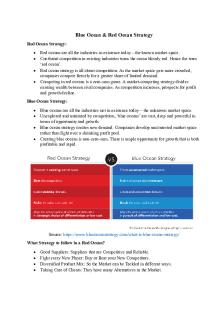Indian Ocean in Antiquity PDF

| Title | Indian Ocean in Antiquity |
|---|---|
| Author | P. Coamceuvensis |
| Pages | 159 |
| File Size | 8.3 MB |
| File Type | |
| Total Downloads | 94 |
| Total Views | 496 |
Summary
The Early Civilizations Obsidian in the Larger Context of Predynastic/Archaic Egyptian Red Sea Trade by JURIS ZARINS This paper represents the third and concluding part ofa study dealing with the distribution and trade of obsidian in the Red Sea. It was initially stimulated by survey work carried ou...
Description
The Early Civilizations
Obsidian in the Larger Context of Predynastic/Archaic Egyptian Red Sea Trade by JURIS
ZARINS
This paper represents the third and concluding part ofa study dealing with the distribution and trade of obsidian in the Red Sea. It was initially stimulated by survey work carried out in Saudi Arabia during 1979-1985. Subsequent investigations into the larger problem brought me into contact with a variety of colleagues and the entire study crystallized dUring the summer of 1987. In conjunction with the resources placed at my disposal in Rome by the staff of the Istituto Italiano per il Media ed Estremo Oriente, the larger pattern of obsidian trade was investigated. In particular, I would like to thank Dr Vincenzo Francaviglia without whose analyses and information the work could not have been completed. The first part of the study was presented in 1987 at Venice during the Ninth International Conference of the Association of South Asian Archaeologists in Western Europe and dealt with the southern Red Sea resources and early trade in obsidian (Zarins 1990). The second part outlining the participation of prehistoric Egypt in this trade was published by the University of Chicago (Zarins 1989). This study will concentrate on some other highly desirable items the ancient Egyptians obtained in the Red Sea by long distance trade in conjunction with obsidian.
Introduction Obsidian, as a natural glass of volcanic origin, lends itself by virtue of its petrochemical properties, as an object of study to identify various archaeological trade route patterns between source and utilized artifact. It became an ideal object of research due to its homogeneous nature and the apparent ease with which different sources could be identified based on both classical petrochemical and trace element analyses. Additionally, since early obsidians were prized for their flaking ability and their extremely sharp edges, and archaeologists could recover their remains very systematically, the study of obsidian distribution became rather popular. Initial work by optical spectroscopy helped determine Neolithic and Bronze Age distribution patterns in the Aegean, Mediterranean, and Anatolia (Cann and Renfrew 1964; Renfrew et al. 1965; Hallam et al. 1976; Cann
89
M£OITE/fR4N£AN
? """':
S E 4
:TriDolI
C:;'
~"""':
Cc.-...
Similar Free PDFs

Indian Ocean in Antiquity
- 159 Pages

Ocean Acidification
- 2 Pages
Popular Institutions
- Tinajero National High School - Annex
- Politeknik Caltex Riau
- Yokohama City University
- SGT University
- University of Al-Qadisiyah
- Divine Word College of Vigan
- Techniek College Rotterdam
- Universidade de Santiago
- Universiti Teknologi MARA Cawangan Johor Kampus Pasir Gudang
- Poltekkes Kemenkes Yogyakarta
- Baguio City National High School
- Colegio san marcos
- preparatoria uno
- Centro de Bachillerato Tecnológico Industrial y de Servicios No. 107
- Dalian Maritime University
- Quang Trung Secondary School
- Colegio Tecnológico en Informática
- Corporación Regional de Educación Superior
- Grupo CEDVA
- Dar Al Uloom University
- Centro de Estudios Preuniversitarios de la Universidad Nacional de Ingeniería
- 上智大学
- Aakash International School, Nuna Majara
- San Felipe Neri Catholic School
- Kang Chiao International School - New Taipei City
- Misamis Occidental National High School
- Institución Educativa Escuela Normal Juan Ladrilleros
- Kolehiyo ng Pantukan
- Batanes State College
- Instituto Continental
- Sekolah Menengah Kejuruan Kesehatan Kaltara (Tarakan)
- Colegio de La Inmaculada Concepcion - Cebu













